Do your knees feel beat up and worn down? Can’t run like you did in high school? Worried you can’t be fit and healthy without worsening your knee issues?

Fear not–in this article you’ll find effective exercises for sore knees. You’ll learn 7 ways to elevate your heart rate, burn calories, and get a great workout–without aggravating your knee problems. Plus, you’ll discover strategies to alleviate knee pain and stay active with less pain.
The 7 Best Cardio Exercises
Irritable knees respond well to low-impact exercises. Try these 7 low-impact options and find out which is best for you.
1) Bike
If your knees hurt, biking is an excellent exercise for 3 reasons:

It’s Non-Impact
With biking, the knee joint doesn’t undergo large, fast, compressive forces. In contrast, think of a jump-rope workout–high-impact through the knees with each landing.
High-impact exercise isn’t bad for our knees, per se. In fact, our bones and muscles adapt to this type of loading and grow stronger.
However, high-impact can easily aggravate knee joint pain. Achy knees handle low-impact exercises better.
Range of Motion
Biking moves the knee joint through a large range of motion–74 degrees to be exact (1).

There’s a PT proverb: “motion is lotion.” Movement provides nutrition, warmth, and lubrication to our joints.
Whether our joints ache or feel great, movement makes us feel better, stronger, and more limber. Movement is one of the 7 Secrets to A Fast Recovery
Quadriceps Strength
Biking builds strength and endurance in the quadriceps. The quad muscles, located on the front of the thigh, extend (straighten) the knee.
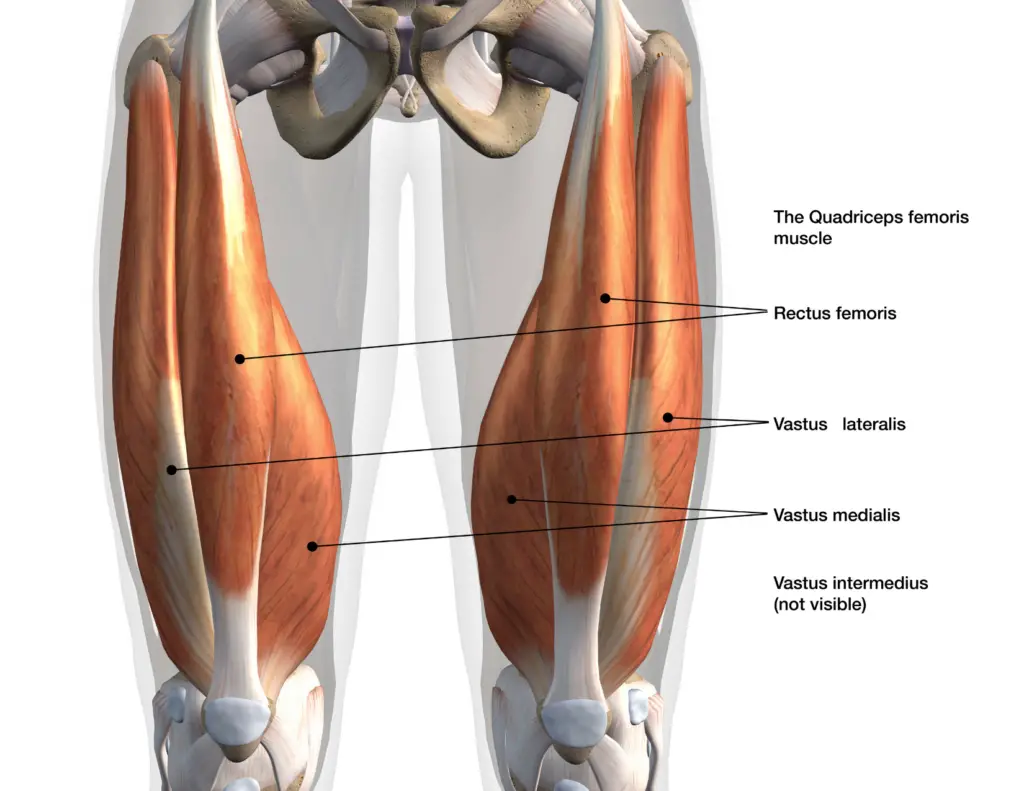
Quad strength is vital for daily activities–walking, stairs, and getting up from the toilet seat. Strong quad muscles increase independence and mobility in older adults (2).
Biking is a great tool for strengthening achy knees–whether it’s working up a sweat in spin class, taking a leisurely ride around the neighborhood, or hardcore cycling. Try a stationary bike first–it’s a good option if you’re just getting started. One like this.
Or if you’re looking for a full-body workout, use an assault bike to get the upper body into the action.
Ideally, your knees should feel looser and stronger after riding a bike. If your knees feel tighter or more painful after dismounting the bike, reduce the intensity or try another cardio option like an elliptical trainer.
2) Elliptical Trainer
Exercising on the elliptical is like having a cat. Either you love it or you hate it. And you’ll never know unless you try!

The non-impact nature of the elliptical machine makes it a great choice for sensitive knees. Running and walking cause pounding, compressive forces through the knee joint with each step. These forces are massive–2.7x body weight during walking and 8x body weight with running! (3)
The elliptical minimizes the pounding forces at the knee. But you still get the bone-strengthening benefits of weight-bearing exercise.
Just like muscles, bones grow stronger when exposed to loading (4). This is known as Wolff’s Law. When you’re on the elliptical, your body weight is supported by your legs, which strengthens the bones in your lower body.
Tangent: If you want strong bones, strength training is essential (5). But poorly programmed weight training can flare-up knee pain. Know your limits and modify when necessary.
You can strength train with a resistance band, machine circuit, or free weight set-up. Regardless of the type of resistance you choose, loading your bones and muscles makes them strong and durable.
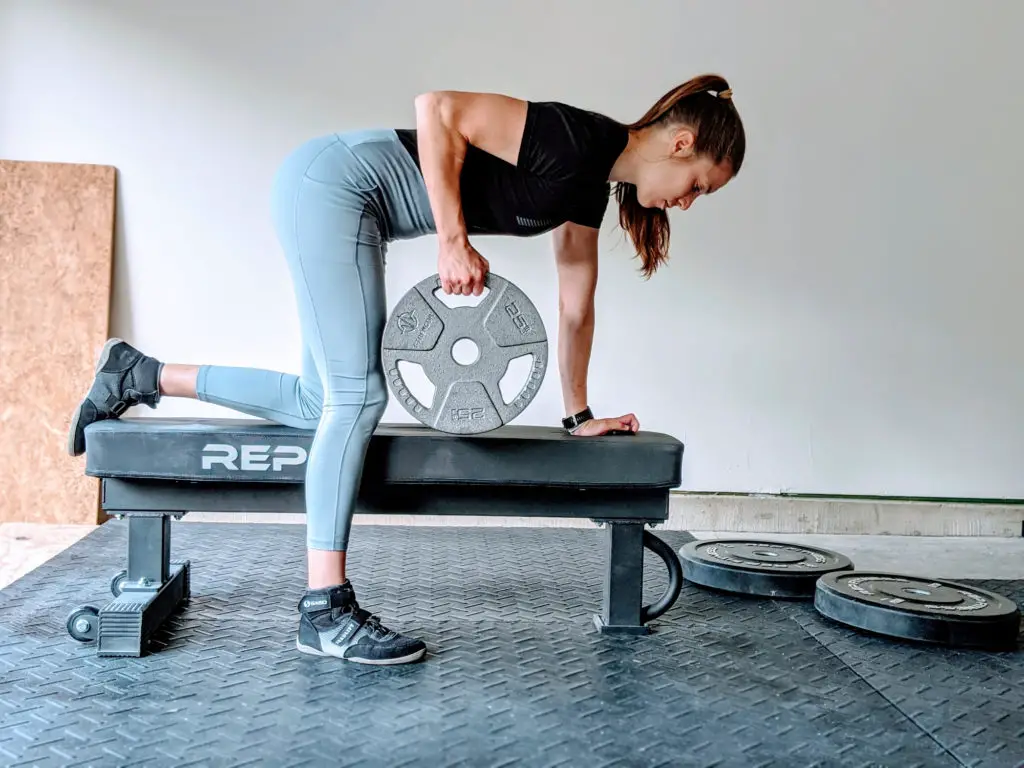
Talk with your doctor if you have questions about resistance training for bone health, especially if you have osteoporosis. Your physical therapist can show you how to start a resistance training program at home or in the gym.
Also, a knowledgeable personal trainer can design a low-impact workout program to suit your goals.
Back to the Elliptical: You can create a light or intense elliptical workout, depending on the incline and the resistance you put on the machine. Ellipticals are versatile, allowing you to adjust the difficulty with the push of a button.
If you’re new to the elliptical, start slow the first day. If you consume 3 scoops of pre-workout, crank the volume to “11” on your favorite pump-up song, and exercise to exhaustion, I guarantee your muscles will be sore the next day. And your knees will hurt.
Instead, start slow, with low resistance. Let your knees adjust to the new exercise. Gradually add time, resistance and intensity as your knees get stronger and adapt to the exercise. You will find the elliptical much more pleasant.
Looking for an elliptical to use at home? Check out this one.
3) Rowing Machine
The rowing machine is a great choice for knee pain because it’s non-impact and non-weightbearing. These factors make rowing minimally stressful on the knees.
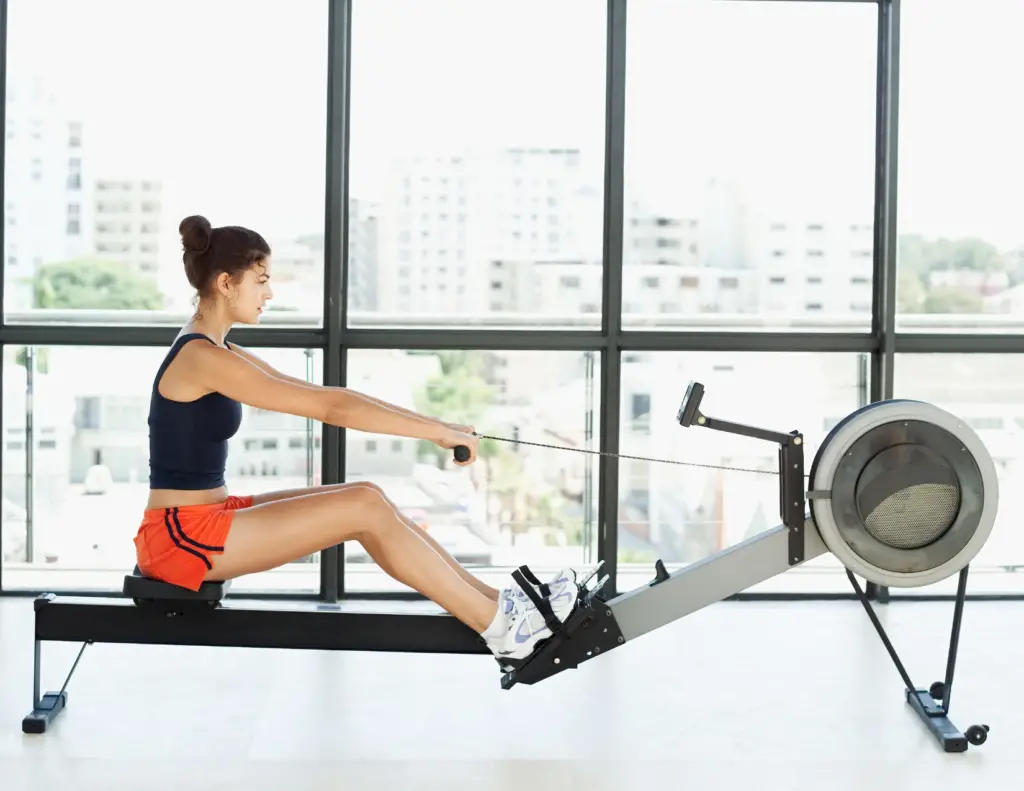
However, rowing requires a lot of knee range of motion. And your knees need to tolerate flexion (bending) well.
If your knees only bend to 80°, rowing is not for you.
Rowing strengthens your quadriceps and glutes. Plus, you’ll develop your forearms, biceps, and back musculature. It’s a full-body workout!
The Concept2 Rowing Machine is top-of-the-line. It’s used by CrossFit Athletes, Olympic rowers, and actor Jason Statham!
4) Step Class
If you’re a social butterfly, an exercise class is just what the doctor ordered!

Many people work harder and have more fun with group exercise. A step class is a great way to strengthen your legs, improve your balance, and enjoy exercise with friends.
It’s a low-impact activity that’s easily modified to suit your fitness level and knee pain.
Check with your local YMCA, health club, or community center to find exercise classes in your area.
5) Recumbent Cross Trainer
These are superb aerobic exercise machines for achy knees. I use a recumbent cross trainer for my patients mere days after knee replacement surgery.
Most recumbent cross trainers allow you to use the arms and the legs, which quickly turns it into a heart-pounding, full body workout.
The machine is simple to use; take a seat, put your feet in the footrests and push your feet back and forth while your arms pull on the handles. Like the elliptical, it’s easy to adjust exercise intensity to match your strength, endurance, and pain levels.
The Nu Step at my clinic is always in high demand!
Water Exercise
Man overboard! Grab your swimsuit for the last two cardio exercises. If you don’t have access to a pool (or want to leave swimming to the fish), skip this section.
6) Swimming
Water exercise soothes knee pain. It’s a good choice for people with achy, easily aggravated knee joints.

Here’s why water exercise feels so good for painful knees:
- The force of buoyancy unloads the knee joint, making water exercise partly or completely non-weightbearing
- Warm water temperatures ease joint and muscle pain
- Water provides gentle compression to the knee joints, attenuating swelling and discomfort.
- Swimming is non impact–the knees don’t take a pounding like they do on land.
Swim laps, walk in the water, or splash around in the pool. Your knees will thank you.
7) Water Aerobics
The same properties of water apply to water aerobics–warmth, compression, buoyancy, and joint unloading all aid in alleviating knee pain.

Water classes enhance upper and lower body strength without the aches and pains of land exercise. Plus, exercise intensity is easily modified. Move fast for more water resistance. Move slow to make the exercise easier.
Water aerobics classes also provide a social dynamic and accountability that’s difficult to emulate if you’re swimming laps alone.
Personally, I like working out by myself or with a small group. Group classes are fun, but not my preferred style of exercise.
Are you a lone wolf? Or a social butterfly? Consider your personality to find the types of exercise you’re most likely to enjoy. Enjoying your workouts is underrated. But it’s vital to your long-term success and adherence to exercise.
Bonus: Circuit Training
You’ve made it this far, so here’s a bonus cardio exercise option you and your knees will love!

Cobble together a few low-impact or non-impact exercises your knees tolerate well. Then perform each exercise for 30-60 seconds. Rest for 30 seconds, then move to the next exercise. Repeat this circuit 2 to 4 times.
Circuit training, also known as High Intensity Interval Training (HIIT) torches a ton of calories, strengthens multiple muscle groups, and saves time at the gym.
Here’s a sample workout with five exercises:
Single Leg Bridges

Front Planks
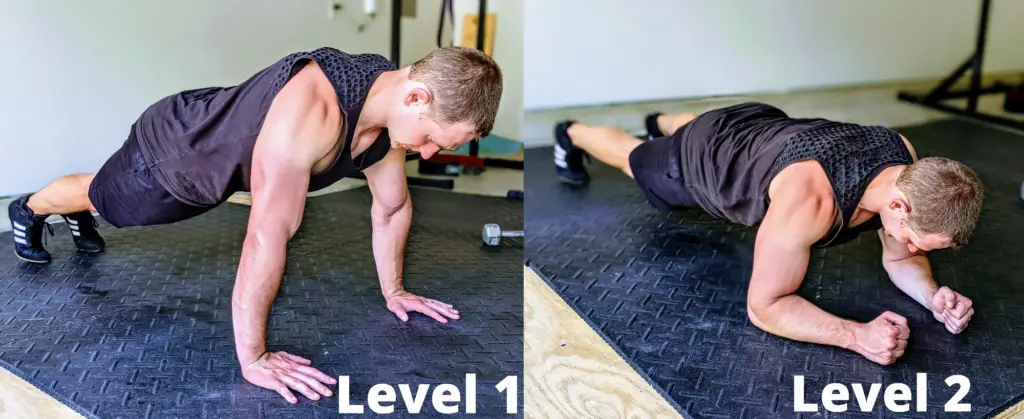
Barbell Rows
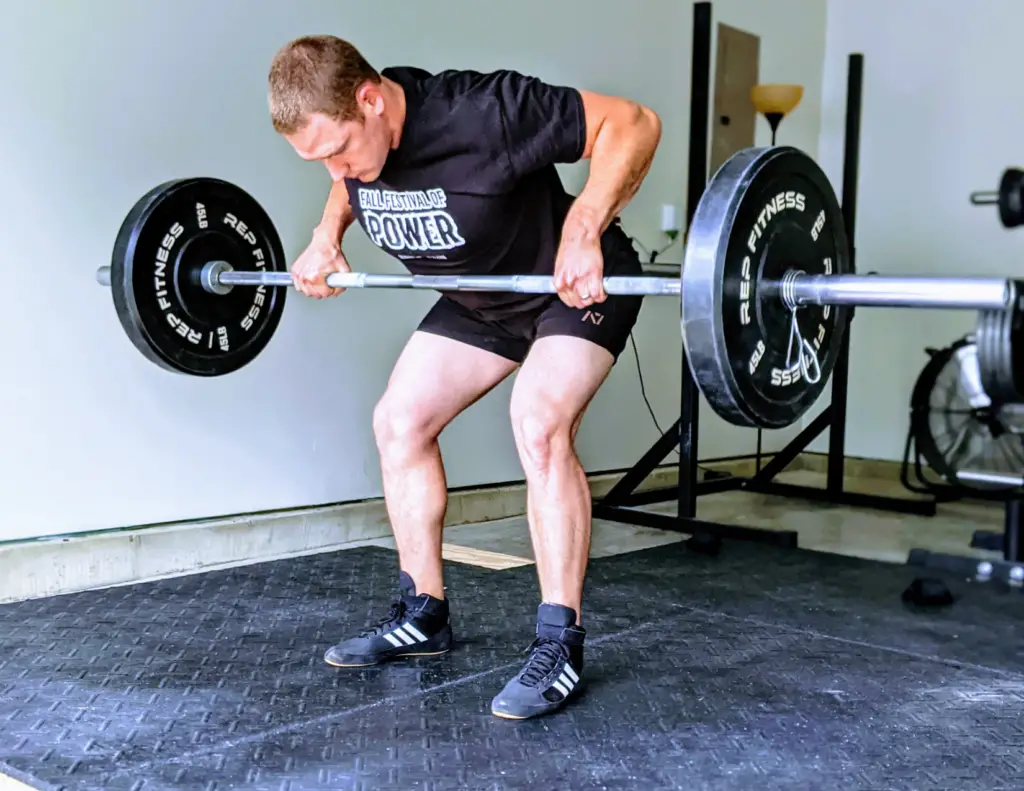
Push-Ups
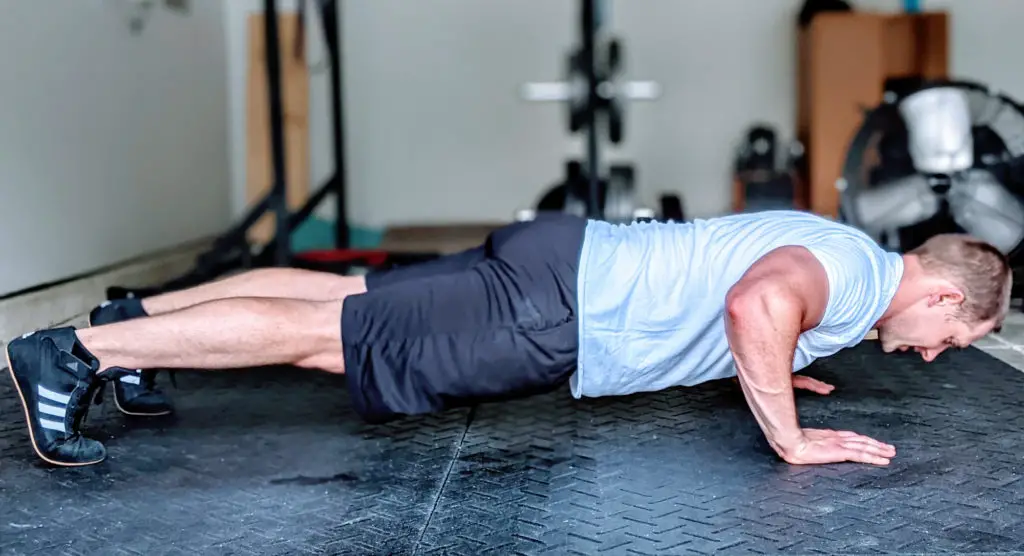
Modified Superman’s
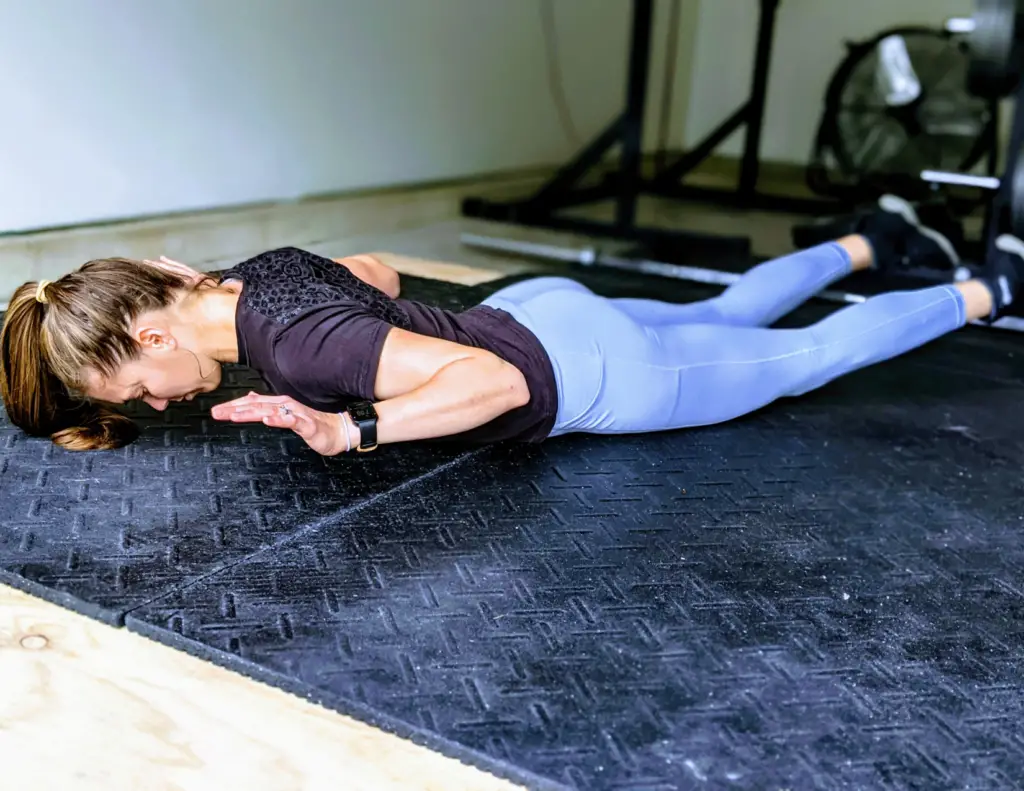
Now that you know 7 low-impact cardio exercises for bad knees (plus a bonus option), let’s cover common questions about knee pain and exercise:
Does Weight Loss Help Knee Pain?
If your Body Mass Index is above 30, weight loss is a realistic route to relieve knee pain. Get your nutrition on track with this science-based guide:
If your BMI is healthy, between 20 and 25, weight loss isn’t needed to reduce knee pain. Long-term, a healthy body weight decreases the risk of knee osteoarthritis up to 78%! (6)
Obesity is linked to a much higher rate of knee arthritis (6). Weight control is key to knee health. If your BMI is over 30, losing 10% of your body weight is the best way to enjoy significant knee pain relief (7).
How Much Should I Exercise?
Current guidelines recommend 150 minutes per week of moderate intensity exercise (or 75 minutes of high intensity exercise). With arthritic or achy knees, moderate exercise is your best bet, unless you’re doing vigorous upper body exercise.
If you’re new to exercise or it’s been a while (let’s be honest, we’ve all been there), it’s okay to start small. Gradually work your way up to 150 minutes/week.

Remember the tortoise and the hare–start at a slow, sustainable pace. Don’t be the hare and flame out in the first 2 weeks of your new workout routine!
The health benefits of cardiovascular exercise are undeniable. You can be healthy, even with knee pain–it’s a matter of finding the right exercise for you.
Can I Do Multiple Forms of Cardio?
Absolutely! Variety keeps workouts interesting. If your knees tolerate it well, go for it!
Aim for 150 minutes of moderate exercise each week. An easy way to meet the goal is 30 min/day, 5 days a week. How you get there is up to you!
How Do I Make it More Fun?
The first key is to find a type of exercise you enjoy (or at least tolerate). The perfect exercise plan is one you’ll do. Try a few options and see what you like the most.
For me, it’s lifting heavy weights and taking unnecessarily long breaks between sets–also known as powerlifting.
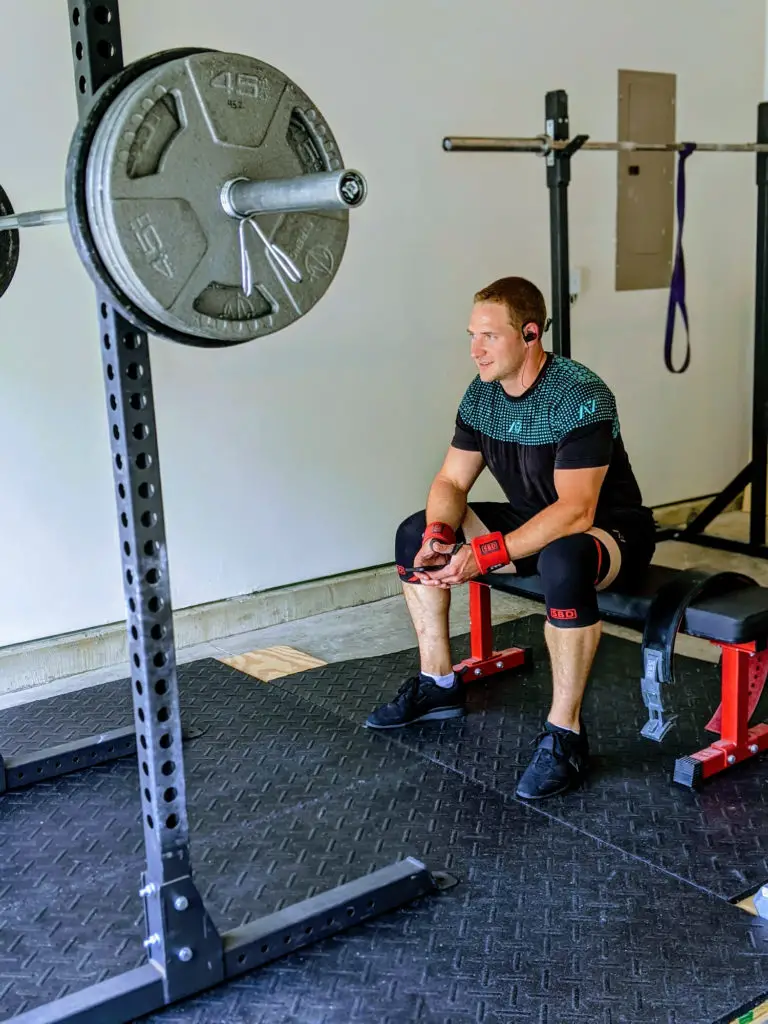
Pump-up music is my audio of choice when I exercise. Others enjoy listening to a podcast or exercising in a group. You can even watch Netflix while you do cardio!
Pro Tip: Link an enjoyable activity to exercise–it’ll make your workout more fun and boost your odds of sticking with it.
Check out Atomic Habits, the best-selling book to learn about breaking bad habits and creating great ones.
How Else Can I Relieve Knee Pain?
Building leg strength reduces knee stress and pain. Think of the muscles around your knee like the shocks on your car.

If your shocks work well, you won’t be jarred and uncomfortable every time you hit a small bump in the road. Strong knee muscles absorb shock, stress, and force. Walking, running and jumping don’t hurt as much.
Weak muscles expose your joints to more loading and pounding. If you have knee problems, strong surrounding muscles translate to less pain.
A few common culprits cause most knee pain. And simple exercises strengthen muscles around the knee and alleviate knee pain. Learn more in this article.
As always, please seek professional medical advice from a qualified healthcare provider–Dr. Google doesn’t count! Getting professional advice is especially important if you recently injured your knee or you are sidelined by chronic knee pain.
What are your favorite cardio exercises for bad knees? Let me know in the comments.
To learn more scientific strategies to get healthier, join the free Facts & Physio Newsletter. Plus, get The Recovery Checklist when you sign up.

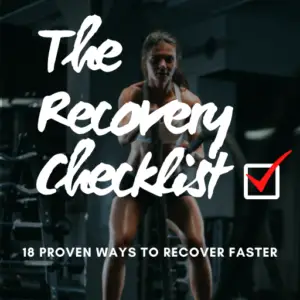
2 thoughts on “The 7 Best Cardio Exercises for Bad Knees”
This information was straightforward, and helpful. Great to know that there is a chance I will not have to go through knee replacement surgery
It is nice to hear from experts who encourage me and provide helpful guidance as I journey through the calamitous days of my vintage years. I will keep moving.
Nia, thanks for checking out the website. So glad you found it helpful! I wish you the best as you journey through your vintage years 🙂